The cultivation of citrus fruits, especially orange, is a great Spanish benchmark, having its main bases in the area of Huelva, Seville and the Valencian Community. There are many scientific studies that show us how to perform adequate plant nutrition to achieve good juice quality, size and number of fruits.
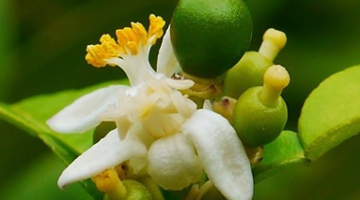
Figure 1. Flowering and fruit setting in citrus.
The flowering and fruit setting phase is critical for many varieties that have production problems. Therefore, the correct application of fertilizers before and during flowering and during fruit set is essential to maintain an adequate number of fruits per tree.
Microelements play an essential role in the flowering of citrus. Among them, and due to their level of consumption, the most important are iron, zinc and manganese. They are related to the setting phase and number of fruits, and their insufficiency in the plant causes physiological disorders and reduces the number of fruits per tree.
Zinc is directly involved in the synthesis of some amino acids, although its most relevant function in plants is the activation of numerous enzymes, highlighting the synthesis of auxins (indolacetic acid). It therefore participates in the production of growth regulators responsible for internode elongation and chloroplast development. Its deficiency significantly reduces growth and productive potential.
Manganese is related to photosynthesis, the efficient use of nitrogen, protein metabolism, and enzyme activation. It acts on the metabolism of carbohydrates and fatty acids, phosphorylation reactions and nucleic acid formation (AND and RNA), in addition to intervening in the photolysis of water in photosynthesis, as well as in the synthesis of sucrose in the plant and in the formation protein. Persistent and severe deficiencies of manganese reduce growth and productivity, damaging the general development of plants.
Figure 2. Zinc deficiencies (left) and manganese (right) in citrus leaves.
During the flower formation process, manganese intervenes in pollen germination and pollen tube growth, while zinc favors pollen formation and viability. Thus, it is essential to maintain adequate nutrition of these two nutrients to ensure adequate and viable flowering to obtain a sufficient and quality harvest.
The fruit set and initial development of the fruit depends, among other factors, on the effects of competition established between the number of flowers in development. In most of the cultivated varieties, the curd deficit only occurs when the plant blooms a lot, but it is also possible to find reduced harvests when the plant blooms very little. In the first case, it is unable to nourish all the ovaries that initiate development and most of these detach from the tree, significantly reducing the harvest. In the second, the reduction in the number of flowers is always related to a very high number of fruits harvested (alternation of harvests) (Moss, 1971); the action of these can be through a nutritional effect, reducing the accumulation of reserves prior to floral differentiation, or through an inhibition of flowering caused by the synthesis of gibberellins that takes place in the fruits (Bellato et al., 1998).
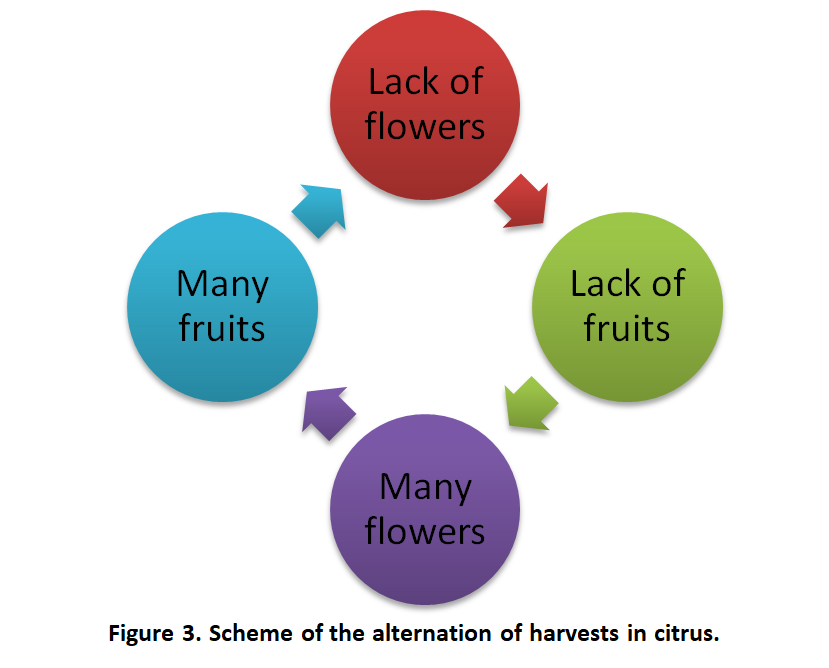
The problem caused by excess flowers is much more frequent. This occurs as a consequence of reduced harvests. The absence of fruits is the cause of a lack of control of flowering, and the excess of flowers translates into a reduction in the harvest that restarts the cycle. In these cases, the intensity of competition between developing flowers is responsible for the decrease in the number of those that started development, as well as for the reduced final size of the fruit.
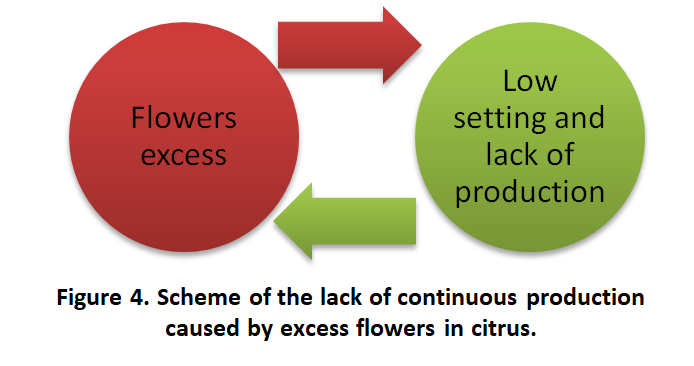
This effect of flowering intensity on fruit set is general for all species and varieties and for all climatic conditions. Experiments carried out with the Tangor ‘Ellendale’ in Spain and Uruguay, in coordination, indicate a decrease in the percentage of curdled flowers as the flowering is more intense (Gravina et al., 1996), regardless of the cultivation area.
To avoid reaching flowering intensities so high that they compromise fruit set and significantly reduce the harvest, hormonal treatments based on the application of gibberellic acid (as a factor of inhibition of flowering) are carried out (Agustí, M. et al., 2003 ), or of some type of biostimulants that provide the plant with metabolites capable of activating the synthesis of promoter and inhibitor factors in sufficient equilibrium to carry out a good flowering and a good fruit set.
From the Cultifort Technical Department we want to offer a recommendation to help meet the nutritional and metabolic needs required during the flowering and fruit set of citrus.
It is a liquid formulation with a high richness in zinc (8.7% w / v) and manganese (10.2% w / v) chelated with EDTA, polycarboxylic acids (2.9% w / v) and reducing sugars * (2.9% w / v).
It is recommended to apply it during spring and summer sprouting or during the last weeks of ripening to accentuate the color of the fruits.
Product certified for use in organic farming (CAAE).
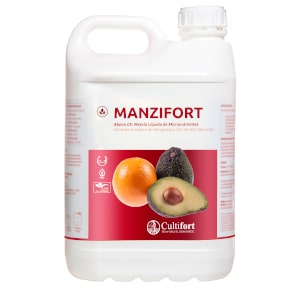
Liquid biostimulant for foliar application and highly synergistic between amino acids (2.4% w / v) and alginic complex in emulsion (24% w / v), with nitrogen (12% w / v) (ureic, ammoniacal, nitric and organic), potassium (1.2% w / v) and reducing sugars * (12% w / v).
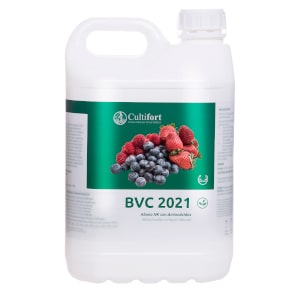
BVC 2021 favors the synthesis of proteins and carbohydrates and promotes the start of the plant’s physiological activity, controls problems of alternation of production, improves the quality of the fruits and advances ripening. The alginic complex in emulsion included in its formula, contains mineral salts, vitamins, essential oils, proteins and natural phytohormones (cytokinins, auxins and gibberellins), in addition to other compounds such as betaines, polyamines and oligosaccharides, which increase the resistance of the plant against low temperatures and adverse weather conditions. Likewise, BVC 2021 acts on apical dominance, exerts a multifactorial control on flowering, delays foliar senescence, participates in the fruit ripening process and can influence their coloration due to their carotenoid content.
*Reducing sugars act as a respiratory substrate, providing energy and facilitating the assimilation of nutrients by the plant.
REFERENCES
Agustí M., Martínez A., Mesejo C., Juan M., Almela V., 2003. Curdling and Development of Citrus Fruits. Technical Disclosure Series. Ministry of Agriculture, Fisheries and Food. Valencian generalitat.
Bellato M., Castro PRC. And Agustí M., 1998. Alternância de produção em citros. Laranja, 19: 293-304.
Gravina A., Rabiza H., Juan M., Almela V. and Agustí M., 1996. Flowering-fruiting interrelationships in ‘Ellendale’ tangor under the growing conditions of Spain and Uruguay. Proc. Int. Soc. Citriculture, 2: 1081-1085.
Moss GI., 1971. Effect of fruit on flowering in relation to biennial bearing in sweet orange (Citrus sinensis). J. Hort Sci., 46: 177-184.

